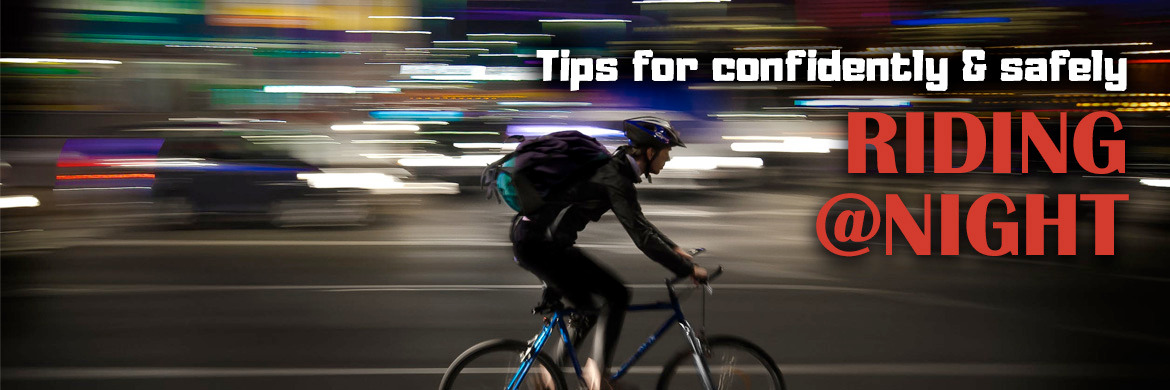
Expand your possibilities
Whether it's to avoid the extreme heat of the day in the summer, a demanding work schedule, or the shorter days of fall, chances are you're going to end up riding in the dark if you're a dedicated cyclist. Whether you're on the brightly lit city streets, dimly lit back roads, or unlit trails, there are necessary steps and precautions to take to make sure you stay safe riding at night. Read on for tips on how you can expand your riding time to ride confidently and safely at night.
Choose the right lights
When choosing an appropriate light for nighttime riding, you need to consider all the roads you'll be traveling on. If you're sticking to well lit streets, then your front and rear light primarily serve the purpose of making sure you're seen by other motorists. Research has shown that a combination of steady and blinking lights is best for making yourself visible. Whether you're on dim or brightly lit roads, always have a red rear light.
On back roads or trails, you're going to need a light with much more power to illuminate the road ahead. A helmet light is recommended to provide the best visibility for turns and hazards up ahead. A helmet light, as opposed to one mounted on the bar, can point to where you want to go, not just where the bike is headed. However, for comfort make sure you have a lightweight unit for your helmet.
Ride to Be Seen
Not only will lights help you be visible, but also the correct position on the road. Drivers in general are looking ahead, and don't always have great visibility to the side. Don't hug the curb - ride about 3 feet into the road so motorist will be able to see you, and so you can avoid hazards such as curbside drain covers. It is important to signal sooner at night than during the day as well.
Be Reflective
Most likely your bike has pedal reflectors, but the more reflective items the better. Clothing with reflective piping or sections increasing visibility more than hi-vis clothing at night. If you're wearing a backpack or have a bag, reflective strips are recommended on those as well. Reflective elements on your gloves will help motorists to see your hand signals.
Be Considerate - Not Blinding
Some bike lights are actually brighter than the typical car headlight. Consequently, you don't want your brightest lights aimed at other motorists' eyes. Once again, this is why it's important to choose the right light for the roads you're riding on. If you have a brighter light, make sure it's aimed at the road so that it's not shining directly in the eyes of others on the road. In addition, if you've been off roading but are headed back to more heavily trafficked (and lit) roads, change the mode on your light to blinking.
Always have Back-up
Since your lights are so important to your nighttime safety, it's wise to always carry a backup. You can either pack the backup in your pack, or you can have two lights (e.g. one blinking and one steady). This way it will not be an emergency if one light goes out. Before heading out on a nighttime ride, always make sure your lights are fully charged. Also be cognizant of the battery life for you light at the brightness level you want to use. Don't get left out in the dark.
Give a Heads Up
It's always smart to tell someone when you're heading out for a nighttime ride, and when you expect to return. This is particularly important if you're planning to off-road at night. If you're off the beaten path, there will not be many passers-by at night to come to your aid in a dicey situation. Speaking of a dicey situation - always pack extra clothing for such an occasion. Things cool down quite a bit without that sun out.
Information found on bikeradar.com.
